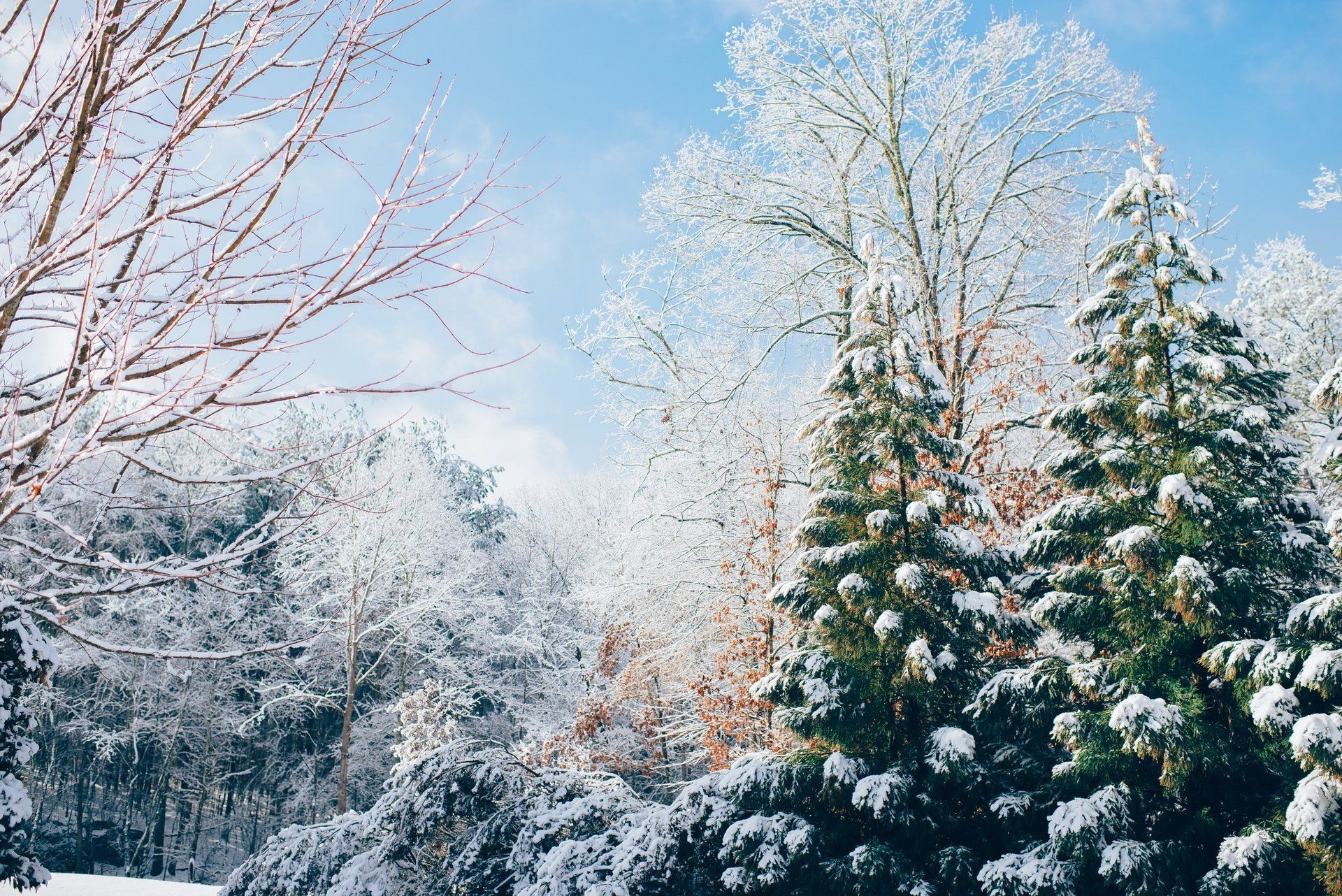Seasonal Maintenance Tips by CAA-Quebec
TRUST THE EXPERTS
Follow these tips to make sure your property remains in good condition over time. Doing smaller jobs on a regular basis can prevent the need for larger renovations caused by an accumulation of unresolved issues.
Tips for Spring
Each spring, make an overall inspection of your home and plan the work that needs to be done
If you have a sloping roof, check the condition of the roofing material (asphalt shingles, sheet metal, or other material) and the condition of the seals on protruding elements such as the chimney, plumbing vent and flashings.
Make sure the drain on your flat roof drain is not cluttered with debris and that the screen is securely in place. If you have a multi-layer asphalt and gravel roof, be sure that the gravel covers the entire asphalt layer. If you have an elastomeric membrane roof, make sure no protective granules have come loose. If you notice any problem, consult a specialized roofer. Finally, inspect chimneys, skylights, electric tripods, flashings and other components of your roof.
Have your chimney and fireplace cleaned at the end of each winter.
Snow and ice can weigh on gutters and loosen their bearings. Make sure they are in good condition and that the water flows out of the downspout well away from the foundation.
Inspect your exterior siding and moldings. Have any loose or fallen items repaired. Have a professional check any chipped, discolored, moldy or cracked items. If you have a brick or stone wall, make sure that there are no pieces that are crumbling or broken, that the mortar is intact and that there is no outward swelling. Contact a masonry contractor if you notice any of these problems.
Check your stairway, balconies and railings and repair any damage.
Test your outdoor sockets. They should be equipped with a ground-fault circuit interrupter (GFI or DDFT in French).
Wash your windows, examine the sealant around the windows and replace your screens. Take the opportunity to repair any holes or tears.
Clean out window wells and any drainage columns.
Do a thorough inspection of the foundation of your home. Contact a specialist if you notice cracks or traces of efflorescence (white deposits), infiltration or moisture.
If you have a well, take advantage of the melting snow to have a laboratory analyze the water quality.
Prepare the air conditioner by cleaning the coils and filters or replacing them. Have a service call every two or three years.
If your heat pump touches the ground, check the level to make sure it has not become unbalanced due to freezing and thawing.
Tips for Summer
Take advantage of the summer season to do your outdoor work
Take a look at your roof after violent storms or high winds. Repair any asphalt shingles and metal flashings that were torn or lifted. Inspect the condition of your roof if any tree branches fell on it.
If you have a flat roof covered with asphalt and gravel, be sure that the gravel covers the entire membrane to protect it from ultraviolet rays. Add gravel anywhere the asphalt is bare. If you notice standing water more than 48 hours after a rainfall, call a roofer.
Make sure your downspouts discharge water downhill at a safe distance from your foundations. Even better, collect the rainwater. Be sure to cover the rain barrel with a screen to prevent the proliferation of biting insects.
Cut any vines, tree branches or shrubs that come in contact with your home and block the air vents of your air exchanger or dryer. Also cut any plants that are too close to your air conditioning unit. Be careful near power lines. Visit Hydro-Québec for more information on the precautions to take near power lines.
Clean the vents of your air exchanger, your bathroom and your dryer. Check all parts and repair broken vents to keep insects, birds and other small animals from getting inside your home.
Fill any holes in your siding to prevent small animals like squirrels and bats and insects such as ants and wasps from intruding into your home.
Inspect everything made of wood around your home. The summer is the best time to repair your fences, balconies, stairs and siding.
Periodically test the strength of your children’s play structures and make sure they are well anchored. Be sure to cover the sandbox with a custom cover or mosquito net to prevent it from becoming a litter box for cats in the neighborhood. Disinfect the sand and replace it from time to time.
Be proactive. Make a preventive tour of inspection to ensure that your systems are safe.
Tips for Fall
This is the time to make sure your home is ready for winter!
Clean and inspect the roof and all its components including the roofing material, metal flashings, skylights and joints. Remove leaves and debris that have accumulated and if you have a flat roof, ensure that nothing is blocking the drain or drain screen.
Make sure the roof access hatch is sealed. Install a compressible windbreaker or removable seal if necessary.
Check the condition of the masonry, metal, anchors and cap or crown of your chimney. Ensure that it is not blocked by debris bird’s nests and clean your flues if necessary.
Remove leaves and debris from gutters and check for loose brackets. Make sure the downspout is not obstructed by pouring water through it, and make sure the water is discharged at a safe distance from the foundation.
Remove any debris from window wells to ensure efficient drainage.
Clean the exhaust vents attached to your appliances (dryer, range hood, bathroom fan and air exchanger) so they can close properly.
Carefully inspect the foundation of your home. Seal cracks to prevent water infiltration and adjust the slope of the ground around your home to prevent water accumulation.
Check the condition of your exterior siding: it must be securely attached to the building for the winter.
Adjust the caulking around your doors and windows.
Remove vegetation from the area around your air conditioning and heating units. Be sure they are stable and are well ventilated. If your unit is more than five years old, have it checked annually by a specialist.
Make sure your railings and handrails are solid.
Tips for Winter
Regularly inspect your home from roof to basement
Remove snow and ice from your roof, your balconies, your patios and your temporary car shelter.
Remove snow and frost from your air conditioning units (heat pump), the vents and the air exchanger as well as the dryer, range hood and bathroom fan exhaust vents. Make sure that they are watertight and airtight when not used.
Check the condition of your roof to quickly remove any ice or ice dam to prevent water infiltration. Ice on the roof is often a sign of attic insulation or ventilation problems.
Inspect your attic to see if there is any ice, rusty nails or mold. If so, contact a specialist to make the necessary corrections to your roof.
Make sure the access hatch to the attic is sealed and install a wind breaker or removable sealant if you find that there are air leaks.
Keep an eye on your ceilings and interior doors. Unusual cracks and friction can be a sign of a significant accumulation of snow or ice on the roof.
Make an evacuation plan in case of fire and inspect the locking devices for windows and doors that can be used as emergency exits.
Measure humidity with a hygrometer if you notice a lot of condensation on your windows. The hygrometer should not indicate more than 45% and 30% in very cold winter weather.
If you do not have an air exchanger, open at least two windows for a few minutes each day to facilitate ventilation and heating your home.
Have a radon detection test.
Locate places where there is air infiltration and uncomfortable draughts during cold weather or high winds and plan necessary repairs for the spring.
Keep the temperature between 10 and 15° C in earthen cellars (crawlspaces) and make sure that the air vents are properly closed off.
GENERAL CONTRACTOR AND ROOFING SPECIALIST
For all your renovation and roofing projects, we can help you.







